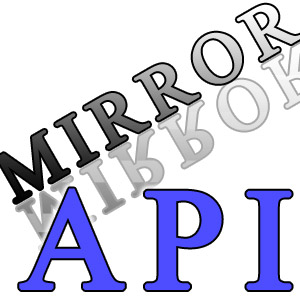 NEWS
NEWS
 NEWS
NEWS
 NEWS
NEWS
![]() Google recently released the Mirror API for its much-awaited project, Glass. Ever since the Glass project came in news, most of us have been wondering about the possible applications and interactions with Google Glass. With this Mirror API documentation, Google tells developers how to interact with Glass.
Google recently released the Mirror API for its much-awaited project, Glass. Ever since the Glass project came in news, most of us have been wondering about the possible applications and interactions with Google Glass. With this Mirror API documentation, Google tells developers how to interact with Glass.
Basically, this API that lets you build Web based interactions, called Glassware, with Google Glass by calling different RESTful endpoints. So, what’s the USP? It’s that this functionality doesn’t need that you run any code on Glass itself, since all interactions are done via RESTful endpoints.
Google’s comprehensive API reference and guide provides five major features, include:
Some API Usage Stories are also available to have a better overview.
A good thing about the Quick Start guide is that it allows you to see a demo of fully deployed version of the starter project to get an idea of how it works. Once you’re ready, you can download and deploy your own quick start project and start modifying it for your Glassware. Google is offering ready to use code in both Java and Python. Though examples are not available in other programming languages, but it’s fair as it’s just the version 1. Full client libraries are available in other languages, like PHP and Ruby.
An interesting playground is also available where you can experiment with different API calls and see the results right away on your browser. If you link your Google Glass account you’ll also be able to interact with your device.
The Glass Mirror API uses OAuth as its authorization scheme and lets you specify different scopes depending on the level of access your application needs, e.g., manipulating the timeline, accessing location information, or reading user information, among other things (in sync with the features we mentioned above).
Google has also provided a complete set of guidelines that great Glassware follows that help you through all phases and aspects of your Glassware development.
In nutshell, the Mirror API is well laid out, properly documented and comes with multiple client libraries. I particularly loved the playground where things can be quickly tested. Let’s see when Glass will be available to the public and what kind of applications will integrate with it.
Support our open free content by sharing and engaging with our content and community.
Where Technology Leaders Connect, Share Intelligence & Create Opportunities
SiliconANGLE Media is a recognized leader in digital media innovation serving innovative audiences and brands, bringing together cutting-edge technology, influential content, strategic insights and real-time audience engagement. As the parent company of SiliconANGLE, theCUBE Network, theCUBE Research, CUBE365, theCUBE AI and theCUBE SuperStudios — such as those established in Silicon Valley and the New York Stock Exchange (NYSE) — SiliconANGLE Media operates at the intersection of media, technology, and AI. .
Founded by tech visionaries John Furrier and Dave Vellante, SiliconANGLE Media has built a powerful ecosystem of industry-leading digital media brands, with a reach of 15+ million elite tech professionals. The company’s new, proprietary theCUBE AI Video cloud is breaking ground in audience interaction, leveraging theCUBEai.com neural network to help technology companies make data-driven decisions and stay at the forefront of industry conversations.